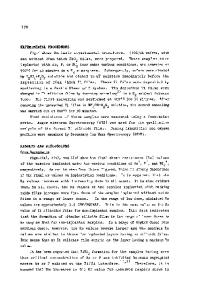On the Formation of Silicide Precipitates in Niobium-Silicide Based Composites
- PDF / 2,042,603 Bytes
- 5 Pages / 418.5 x 645.3 pts Page_size
- 97 Downloads / 332 Views
ABSTRACT Composites based on Nb-Si are attractive candidates for use as structural materials at the very high temperatures required for future aircraft engines. The composites described were produced by directional solidification, which gives a microstructure consisting of Nb dendrites with an Nb 3Si-Nb eutectic. The aim of this paper is to provide a detailed characterization of precipitates observed in the Nb dendrites in both binary and higher-order alloys. The precipitates possess the Nb3Si stoichiometry, but not the stable Nb 3Si structure. The precipitates form a metastable orthorhombic crystal structure which is related to the Nb matrix via a simple orientation relationship. INTRODUCTION Previous investigations of Nb-Si in-situ composites have shown a promising combination of high-temperature strength, creep resistance, and room-temperature fracture toughness [1-3]. These composites consist of Nb 5Si3/Nb 3Si toughened with a Nb solid solution (abbreviated here by (Nb). The (Nb) also contains a dispersion of silicide precipitates [4, 5]. The present paper describes the morphology, crystallography and chemistry of precipitates in Nb solid solutions of directionally solidified (DS) composites of binary Nb-Si and ternary Nb-Ti-Si alloys. Mendiratta and Dimiduk [5] reported Si-rich precipitates in binary Nb-Si alloys, and they postulated that these precipitates were generated as a result of the decrease in the solubility of Si in (Nb) with decreasing temperature. The Nb-Si phase diagram [6] indicates that Nb has a maximum Si solubility of 3.5% at the eutectic temperature (1880'C) and it decreases to 0.5% at 17700 C. These data can therefore account for the precipitation that has been reported. Phase stability in the Nb-Ti-Si system has also been investigated, and two-phase composites have been reported [7, 8]. The Nb 3Si with Ti in solid solution is referred to as (Nb,Ti) 3Si, because Nb 3Si and Ti3Si are isomorphous. Similarly, the Nb with Ti and Si in solid solution is referred to as (Nb,Ti). EXPERIMENTAL Binary Nb-Si and ternary Nb-Ti-Si alloys were prepared by induction levitation melting of elemental Nb, Ti, and Si in a segmented water-cooled copper crucible. The alloys were triple melted and then in-situ composites were generated using directional solidification [9]. Foils for Transmission Electron Microscopy (TEM) were prepared from transverse sections of the DS composites. Samples were examined using a Philips XL-30 Field Emission Gun Scanning Electron Microscope (FEGSEM), a Philips CM200 TEM, and a Philips CM300 FEGTEM. RESULTS AND DISCUSSION The Nb-14%Si alloy contained (Nb) dendrites and an inter-dendritic eutectic of (Nb) and Nb 3Si [3]. Nb 3Si was the continuous phase of the eutectic, and electron microdiffraction patterns showed that KK5.27.1 Mat. Res. Soc. Symp. Proc. Vol. 552 0 1999 Materials Research Society
it possessed the stable tP32 structure (the Nb 5Si3and Nb 3Si have t132 (space group I4/mcm) and tP32 (space group P42/n) crystal structures, respectively). Each (Nb) dendrite was essentiall
Data Loading...








